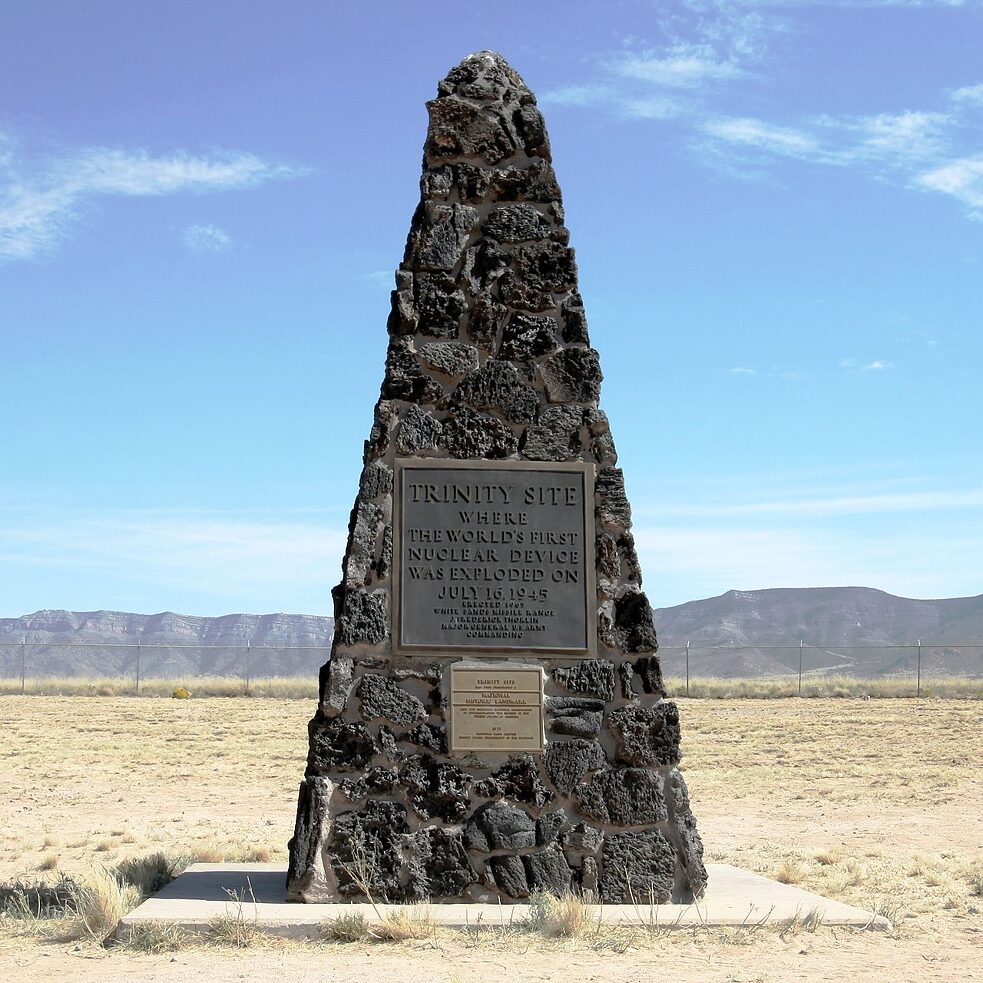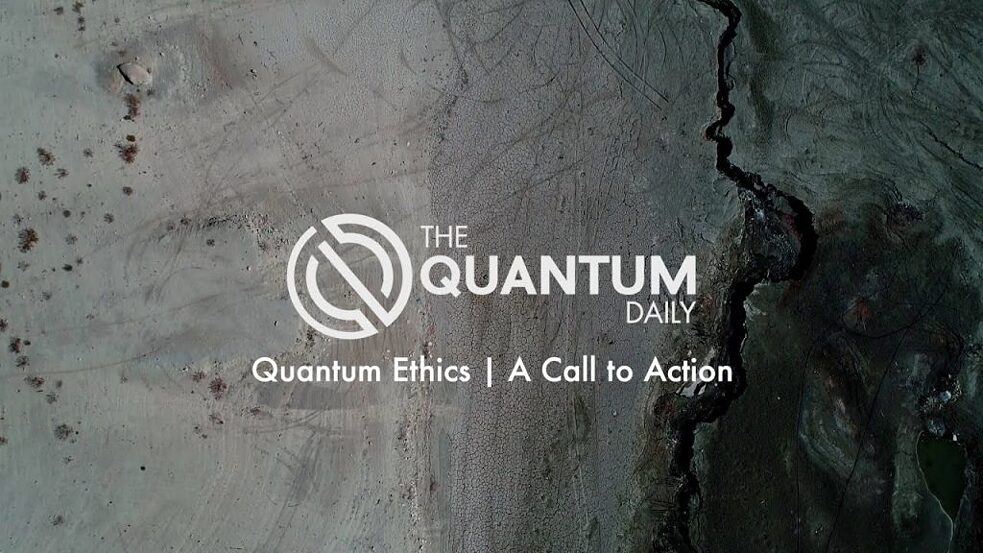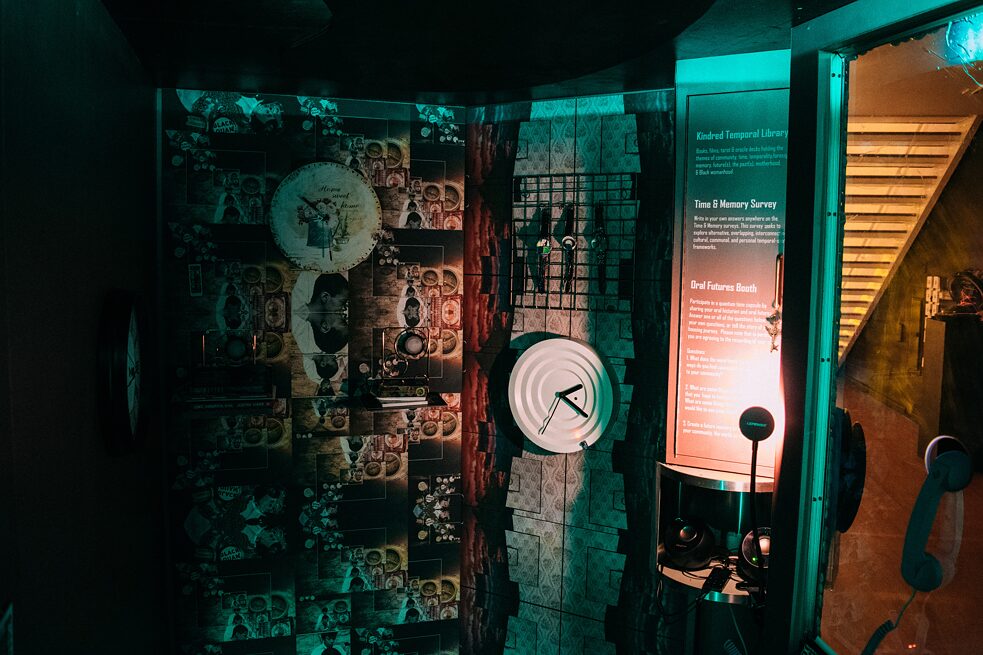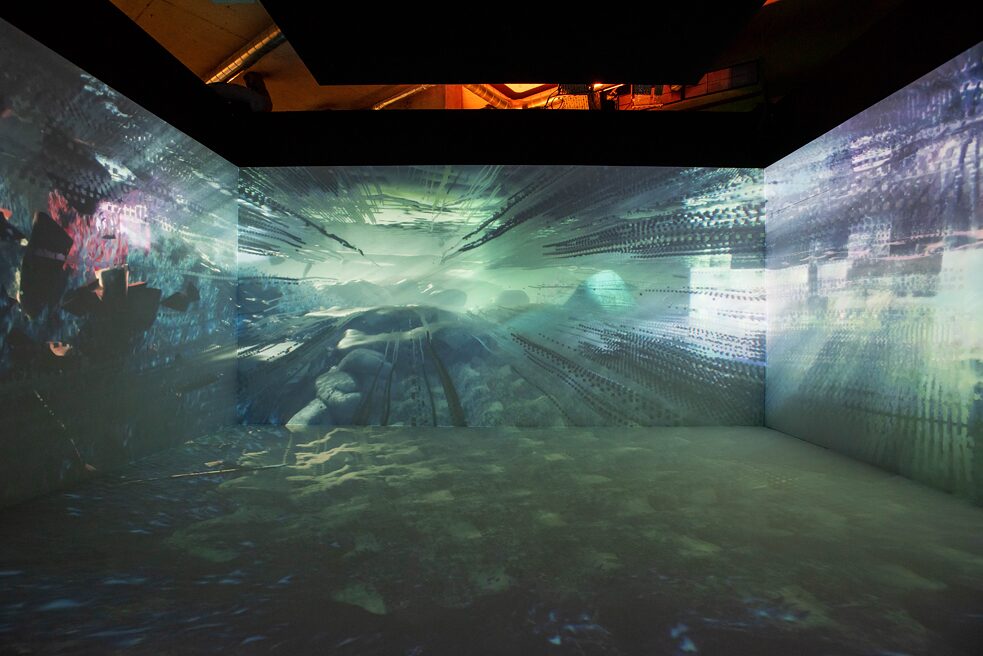Third Quantum Revolution
Das weltverändernde Potenzial der Quantentechnologie

Quantum technology is becoming the “next big thing”. Many agree on that. But what does this mean for society, culture and the arts? A comprehensive analysis by Lucy Rose Sollitt.
By Lucy Rose Sollitt
Over the last few weeks I’ve delved into the rapidly advancing field of quantum technologies, exploring the histories, applications and geopolitics of what’s often referred to as the “3rd quantum revolution”. The 3rd revolution refers to major steps forward in the development of quantum computers and related technologies including the quantum internet, new sensors and highly precise devices. The 1st quantum revolution was nuclear, while the 2nd revolution entailed major advances in lasers, GPS and the transistors used in mobile phones and laptops.
I’ve been helped in my research by artist and quantum physicist, Libby Heaney, and a number of other experts in the field. The so-called revolution entails major steps forward with quantum computers and related technologies (the quantum internet and sensors, for example) as well as a surge of investment., These technologies are anticipated to bring about a new wave of industrial applications: from breaking traditional encryption and enhanced warfare to new eco-materials and exponential increase in medical advances.
The advances could be immense, but they also have potential to do harm as well as good. With logics of profit and power, along with scientific positivism, dominating quantum endeavours there are increasing concerns that the so-called revolution is more likely to reproduce and accentuate the status quo – with its inequities and unsustainable values – rather than meaningfully disrupt it. However, the physics underpinning quantum technologies suggests a radically different story about the world – undermining the dualism of the modern western paradigm, highlighting our coexistence and generative power of indeterminacy. What if the quantum revolution was framed in these terms?
The dominant narrative
 Trinity Site Obelisk National Historic Landmark - commemorating the location of the explosion of the world’s first nuclear device on July 16, 1945 at Trinity, New Mexico. The Trinity test site was described as “uninhabited land” but 19,000 Native Americans were living in the vicinity of this indigenous land.
| Image via Samat Jain, Flickr
A race to develop quantum technologies is on and it matters more than ever, what agendas and assumptions drive the race. Quantum computers, the technology at the heart of the push, may only be 5-10 years away from being fully scalable and fault-tolerant. Once up and running, the computing power will vastly outstrip the power and pace of technological change seen today. For example, the computing power of IBM’s Eagle quantum chip computer announced in November 2021 surpasses classical supercomputers by a million times.
Trinity Site Obelisk National Historic Landmark - commemorating the location of the explosion of the world’s first nuclear device on July 16, 1945 at Trinity, New Mexico. The Trinity test site was described as “uninhabited land” but 19,000 Native Americans were living in the vicinity of this indigenous land.
| Image via Samat Jain, Flickr
A race to develop quantum technologies is on and it matters more than ever, what agendas and assumptions drive the race. Quantum computers, the technology at the heart of the push, may only be 5-10 years away from being fully scalable and fault-tolerant. Once up and running, the computing power will vastly outstrip the power and pace of technological change seen today. For example, the computing power of IBM’s Eagle quantum chip computer announced in November 2021 surpasses classical supercomputers by a million times.Quantum computers are anticipated to enable a huge range of innovations: quantum cryptography both breaking traditional encryption and enabling new forms of privacy; optimisation, allowing vastly more efficient systems design and enhanced machine learning; and molecular simulation, leading to the evolution of new materials including eco-batteries, medicine, DNA manipulation and bio-chemicals. The applications could bring great benefits, especially in tackling climate change, but also huge harm for example, chemical warfare and reinforcing surveillance capitalism.
Right now, geopolitical and economic narratives dominate the race – these have their foundations in the modern paradigm and extractive economic logics. As the advances gather pace quantum research has become a key priority for science, technology and defence policy in the USA, China, Europe, Japan, the UK, Canada and India. Billions of dollars, as well as national security are at stake, for example, the ability of quantum computers to break cryptography or the potential for major military advantage using quantum navigation, stealth, biomaterials and intelligence. Secrecy and competition are growing, along with massive imbalances, for example, the budgets set aside for quantum in China and USA dwarf those elsewhere.
Massive global turbulence is also shaping development. Factors such as the pandemic and climate emergency, as well as rising inequality and geopolitical polarisation, influence which technological applications are prioritised and could intensify the positive and negative outcomes in complex ways. When combined, pressing global issues, competition and the technical complexity of quantum, create a perfect storm in which it is easy to de-prioritise critical reflection. But urgent questions need to be asked, such as: who owns the technology and knowledge generated by it? Who has access to it? How will it be applied and for what goal?
Without checks and balances, quantum knowledge, expertise and devices are increasingly limited to a highly resourced elite largely based in the Global North, India and China. To participate in the race, countries and/alliances must be able to access major investment or funding and attract a finite workforce of quantum experts. Quantum technologies are primarily being developed within Big Tech companies, well-funded private start-ups or across academic networks in these regions. Commercial intellectual property (IP) requirements, privatisation of research and increasing national protectionism discourage open collaboration and prevent wide access. Examples of protectionism include: security restrictions regarding the sharing of some quantum innovations; opacity around quantum investment and development in China; and the EU’s recent exclusion of the UK, Israel and Switzerland from participating in the EU’s Horizon Europe programme for quantum technology.
And, as is well known, when access is limited to a narrow demographic the outcomes disproportionately benefit the few, while the presence, imaginaries and agency of rest – who could ultimately be most affected by the developments is excluded. Forms of colonial violence – already intimately entangled with the histories of quantum physics – could be exacerbated. Nuclear Physics (and the atomic bomb) was developed alongside and inside Quantum Field Theory with the same scientists working on both.
Ethical debate
Thankfully, a growing number of leading scientists and academics are calling for ethical guidelines and principles, as well as public debate. The perceived “weirdness” of quantum physics can be a hurdle to understanding – the concepts and methods are complex and the outcomes counter the assumptions of the classical western scientific worldview. Classical science is based on a fundamental assumption of subject object division, emphasises the empirical measurement and observation of nature to arrive at “universal laws” that describe or predict natural phenomena. It implies a mechanical universe. But people are taking on the challenge both as individuals and collectives. A group of leading quantum computing scientists and engineers urge tackling ethics guidelines.
| The Quantum Daily, Quantum Ethics: A Call to Action, 2021. Image via The Quantum Insider.
Arriving at an ethical framework is rarely simple. But as James Der Derain, founder of ProjectQ, an international initiative to develop a “meta ethics” of quantum technologies, points out, working with difference, dissonance and dissent is essential to its success. The consequences, fears and meanings attached to technologies are different depending on one’s geographic and/or cosmological perspective. Likewise a single set of norms, rules or regulations will not fit all disciplines, sectors and applications, instead a diverse range of users and contexts must be considered. Pursuing pluralist accords, rather than presupposing an understanding of globally shared values is essential.
A group of leading quantum computing scientists and engineers urge tackling ethics guidelines.
| The Quantum Daily, Quantum Ethics: A Call to Action, 2021. Image via The Quantum Insider.
Arriving at an ethical framework is rarely simple. But as James Der Derain, founder of ProjectQ, an international initiative to develop a “meta ethics” of quantum technologies, points out, working with difference, dissonance and dissent is essential to its success. The consequences, fears and meanings attached to technologies are different depending on one’s geographic and/or cosmological perspective. Likewise a single set of norms, rules or regulations will not fit all disciplines, sectors and applications, instead a diverse range of users and contexts must be considered. Pursuing pluralist accords, rather than presupposing an understanding of globally shared values is essential.Many questions remain, such as how ethical principles or guidelines would be agreed upon and implemented, whether state regulation is needed and how this would account for the broad range of fields in which quantum technologies may be applied. But the most challenging question of all, is how to subvert the immediate commercial and geopolitical drivers for quantum technologies and pursue what is meaningful for society in the long term.
Quantum imaginaries
 Black Quantum Futurism Black Women Temporal Portal, 2019.
| Image by D1L0 DeMille
One approach, explored by philosopher and quantum physicist Karen Barad, is to look for radical political imaginaries within quantum physics itself. The insights of quantum physics can both meaningfully “trouble” the dominant narrative of profit and power (and the modern paradigm it is based on) as well as inspire alternative imaginaries within which the technologies can be developed. This approach nurtures the deconstructive dynamic within quantum physics and converges with Jacques Derrida’s critique of modernity. One of the most significant aspects of this is to subvert the dualist basis of the modern paradigm. Use of the term “trouble” is inspired by Donna Haraway. Looking especially at climate change and environmental destruction as part of our troubled times, Donna Haraway proposes that we “stay with the trouble”. “Our task”, Harraway says in her book Staying with the Trouble: Making Kin in the Chthulucene (2016), “is to make trouble, to stir up potent response to devastating events, as well as to settle troubled waters and rebuild quiet places.”
Black Quantum Futurism Black Women Temporal Portal, 2019.
| Image by D1L0 DeMille
One approach, explored by philosopher and quantum physicist Karen Barad, is to look for radical political imaginaries within quantum physics itself. The insights of quantum physics can both meaningfully “trouble” the dominant narrative of profit and power (and the modern paradigm it is based on) as well as inspire alternative imaginaries within which the technologies can be developed. This approach nurtures the deconstructive dynamic within quantum physics and converges with Jacques Derrida’s critique of modernity. One of the most significant aspects of this is to subvert the dualist basis of the modern paradigm. Use of the term “trouble” is inspired by Donna Haraway. Looking especially at climate change and environmental destruction as part of our troubled times, Donna Haraway proposes that we “stay with the trouble”. “Our task”, Harraway says in her book Staying with the Trouble: Making Kin in the Chthulucene (2016), “is to make trouble, to stir up potent response to devastating events, as well as to settle troubled waters and rebuild quiet places.”
Entanglement and responsibility
Deconstruction opens up other ways of thinking about the world including the possibility to reimagine modern ethics. For example, entanglement and superposition suggest co-constitutive subject positions challenging the idea of binaries and separateness between the self and other. While quantum phenomena such as the Measurement Problem, deconstruct the idea of knowability suggesting that knowledge is contingent, unstable and always co-created. There are many interpretations of the Measurement Problem, I’m using it to broadly refer to the phenomenon that a particle falls out of superposition when we attempt to measure it. Barad’s concept of “intra-action” highlights our shared responsibility in phenomena and how concepts such as entanglement undermine logics of categorisation and control, or challenge polarised political viewpoints.Superposition is the ability of a quantum system to be in multiple states at the same time until it is measured. For instance an atom may be spinning up and down at the same time.
Three Minute Theory, 2014, provides a simple overview of intra-action.
Likewise, Barad’s interpretation of related concepts of diffraction and superposition become a method for making visible and addressing the material presence (the “time being”) of quantum physics’ own entanglement with violent histories and colonialism within the present and future. It opens up other readings of the present and attempts to address injustices rather than enforcing or proliferating them. This material reading of time as nonlinear and material complements that explored by writer Kyoki Hayashi in her book, ‘Trinity to Trinity’ and the practice of visual artists, Black Quantum Futurism.
Indeterminacy and wonder
 The Evolution of Ent-: QX, Libby Heaney’s current exhibition at Arebyte gallery, London. For this exhibition Libby has created an immersive experience taking audiences through three earthly layers of quantum experiments containing quantum hybrid lifeforms and pulsating liquid worlds.
| The Evolution of Ent-: QX, 2022, Libby Heaney, installation shots from arebyte Gallery. Ent- 2022, commissioned by Light Art Space. The Evolution of Ent-: QX commissioned by arebyte Gallery. Photo credit: Max Colson.
Wonder can be a powerful tool for thinking beyond the status quo and imagining other possibilities. An emphasis on observability and measurement in classical science means that intangible knowledge, such as wonder, has been disregarded. Yet quantum physics is full of wonder; even trying to describe what it tells demands an almost poetic level of expression.
The Evolution of Ent-: QX, Libby Heaney’s current exhibition at Arebyte gallery, London. For this exhibition Libby has created an immersive experience taking audiences through three earthly layers of quantum experiments containing quantum hybrid lifeforms and pulsating liquid worlds.
| The Evolution of Ent-: QX, 2022, Libby Heaney, installation shots from arebyte Gallery. Ent- 2022, commissioned by Light Art Space. The Evolution of Ent-: QX commissioned by arebyte Gallery. Photo credit: Max Colson.
Wonder can be a powerful tool for thinking beyond the status quo and imagining other possibilities. An emphasis on observability and measurement in classical science means that intangible knowledge, such as wonder, has been disregarded. Yet quantum physics is full of wonder; even trying to describe what it tells demands an almost poetic level of expression.Quantum physics is at once our most complete scientific description of “how everything works” while being simultaneously indeterminate. In fact indeterminacy (both epistemological and ontological) seems to be a necessary condition of both its completeness and its wonder and mystery. This relates to Bohr’s Complementarity Principle whereby complete knowledge of phenomena on atomic dimensions requires a description of both wave and particle properties, but it is impossible to observe both wave and particle aspects simultaneously. Indeterminacy is central to entanglement and superposition and tied to the fact that the act of “observation” entails co-creation (the Measurement Problem); it highlights the intricate and exquisite sensitivity of nature along with its potential to birth existence. Indeterminacy provides the conditions for existence – or as Barad puts it the “im/possibility of non existence” – to unfold simultaneously along an infinite number of pathways. Nature, therefore, can never be fully pinned down or represented, but instead is dynamic, energetic and sensitive to the touch – it seems to “zing!” as physicist Chris Fuchs puts it.
Quantum physics is full of wonder; even trying to describe what it tells demands an almost poetic level of expression.
In many ways, the science seems to refer us to the language of art and/or the stories of some religious and pre-modern belief systems. These frameworks have the capacity to allow us to feel and intuit, or communicate in other terms, the core of what quantum physics tells us. Over the years, visual artists, writers, musicians and so on, have been inspired to bring alive and explore the implications of quantum theory, as well as test the bounds of its unrepresentability.
Jorge Luis Borges’s exploration of Many Worlds theory in his 1941 short story, The Garden of Forking Paths for example. Many Worlds theory is implied when entangled particles are in a state of superposition within the quantum void, in this moment as Barad explains, the so-called void “is filled with all possible yearnings of space time indeterminacy” (Karen Barad, speaking at Eurpean Graduate School, 2017). The quantum vacuum is high dimensional (a quantum computer with just a handful of qubits can manifest 15 dimensional space) and contains all possible pathways for a particle from one position to another.
In her experimental artworks, Libby Heaney has used the void as a medium creating works which momentarily exist within it (as particles of infra-red light). She has also tested the possibilities to create a visual sense of entanglement by inputting images into a quantum computer.
What might be possible if we were to step back from the race to develop quantum technologies, and instead tend to this wonder? Fully felt wonder transforms into respect. Might reconnecting to a sense of wonder inspire other imaginaries with which to develop the technologies?
Meaningful technologies
Quantum technologies have double edged potential to bring great good and do great harm. Merely mitigating the potential negative consequences of quantum technologies leaves the dominant narrative that frame development intact. But reconnecting with the insights of quantum physics suggests a need to go further.Phenomena such as entanglement, superposition and indeterminacy deconstruct and disrupt the status quo undermining its dualist basis and suggest radically different ways to think about responsibility, time and meaning. Moreover, wonder demands that we think beyond the dominant narratives of money and power. This, more than the next technical innovation, is surely the way to imagine the 3rd quantum revolution.
Thanks to Antony Dunne, James Der Derain, Anna Pearson, Michal Stechly and Libby Heaney who have all helped guide the research informing this article.